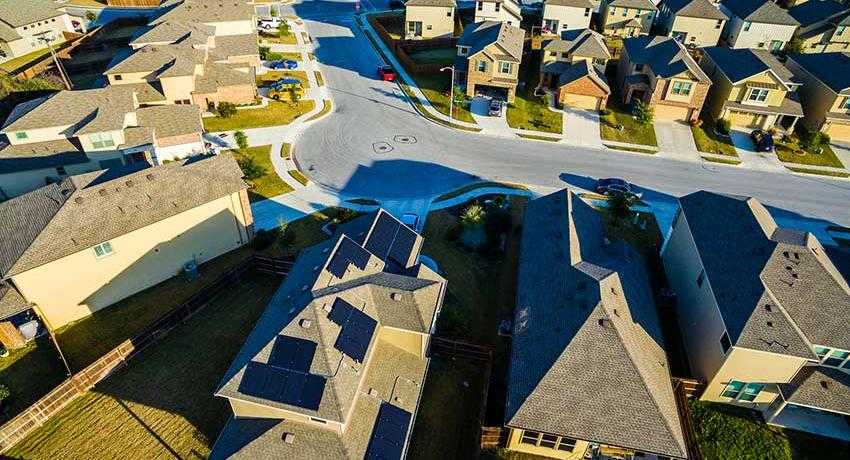PG&E Launches Renewable Energy Self-Generation Incentive Program
Early in May, Pacific Gas and Electric Company, or PG&E, announced that it would devote $240 million to helping customers buy into renewable energy technologies, renewable energy storage, and peripheral technologies.
The program was developed by the state legislature and the state’s utility watchdog, and will be administered by California’s energy companies – a move that would be similar to setting a fox to watch a henhouse were it not for the watchdog California Public Utilities Commission (CPUC).
The program headliner is SGIP, or self-generation incentive program, and beginning immediately it will allocate 79 percent of the funds to renewable energy storage – with 13 percent of that 79 percent reserved for residential projects. The program ends in 2019.
The remaining 21 percent is dedicated to wind turbines, fuel cells, and biogas internal combustion engines. Granted, the residential consumer portion is not huge, but what it says about renewable energy storage is.
Allocations aside, the program clearly underlines an overwhelming (and hopefully enduring) focus on renewable energy storage. As experts point out, renewable energy storage at the residential level increases system reliability in a rapidly diversifying energy dynamic, largely because homeowners can act as their own utilities/generators when load is heavy.
Is the SGIP a response to Tesla’s rooftop solar? If it were anywhere but California, experts might say yes, but California is already well out in front of the pack in terms of renewable energy options. Which doesn’t stop the pack from running, as witness the recent announcement from Mercedes-Benz Energy Americas, LLC – successful in the European market – and Vivent Solar who are jointly ready to debut their solar-plus-storage in the United States.
Under the twin banners of more control over the energy residential consumers generate, and the cost savings vis-à-vis time-of-use (more expensive when everyone needs it, but let’s revisit that later), Vivint Solar already serves more than 100,000 homes and businesses across the U.S., but this newest offering is the best (if not only) way to integrate electric car use into an aging power grid. Not to mention upscale America’s love affair with German engineering.
On May 10, another solar roof manufacturer, GAF, announced DecoTech, a low-profile solar roof whose edges are flashed to prevent moisture incursions. It is the company’s first effort to attract residential solar customers, but not its last, according to GAF VP Tony Ruffine, who referred to DecoTech as “the first of a road map of solar products”.
The not-so-subtle dig is probably a reference to Dow Chemical, which spent several years and a lot of money building and advertising it solar roof business, and then dumped it, possibly clearing the slate for its merger with DuPont. The company has promised to continue servicing its Powerhouse™ integrated photovoltaic (BIPV) roofs, but suspended shipping on August 10, 2016.
Perhaps Dow has a fortune teller onboard: SolarCity’s solar roof installations have dropped by 40 percent in the first quarter of 2017. By the numbers, this is 150 megawatts (MW) of solar vs. 245 MW in the first quarter of 2016.
It isn’t just SolarCity, either. All across the industry, sales people are running into a plethora of existing installations among those who typically buy into environmentally friendly options. This thinning of the herd is coupled with expired or downsized federal, state and local renewable energy incentives, and a President and largely Republican Cabinet which is more concerned with walls than roofs.
Let’s revisit time-of-use energy pricing. Yes, we all know that we can save money by running our dryers and dishwashers at night. And we also know that doing so helps utilities balance the load, which is no mean feat given the age of the nation’s energy infrastructure and the difficulty of adapting a fossil-fuel energy mix to renewables. But is it all about load or peak demand – avoiding brownouts and the use of more polluting and more expensive to operate power plants – or is some of it simply greed?
Investor-owned utilities (private electricity and natural gas providers) are, by the numbers, the smallest contingent of the U.S. electricity grid, but the ones with the most customers.
These utilities, which are allowed to make a profit in order to placate their shareholders and keep their systems operating, are in the bullseye of a new energy paradigm: their customers can – with sufficient outlay of money or credit – bypass them in favor of clean, renewable energy systems.
It’s a scary feeling, to spend a century delivering something everyone needs, only to discover that some of those people don’t need it any more – and the don’t-need segment grows every year as renewable energy drops in price.
This shifting energy paradigm happened with Ma Bell and landline phones, and is currently threatening traditional television with a hybrid that runs on PCs, laptops, even android phones. Radio, once in the holographic red dot, has clawed back a limited but devoted audience.
One writer calls it greed. It may simply be complacency. Entergy sits on its hands, hoping for the best – a deus ex machina that is never going to happen. Xcel innovates.




